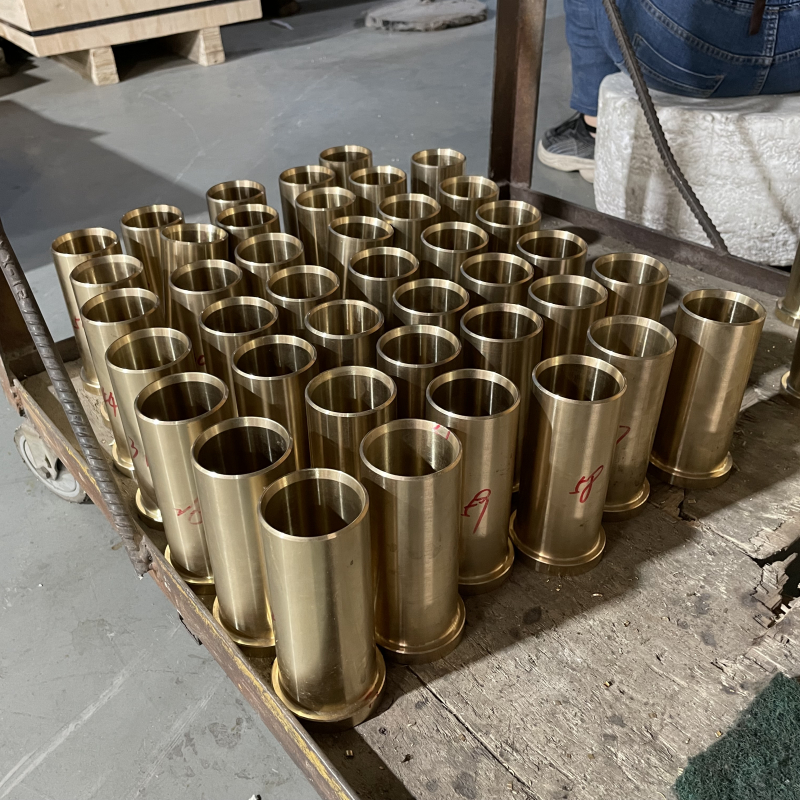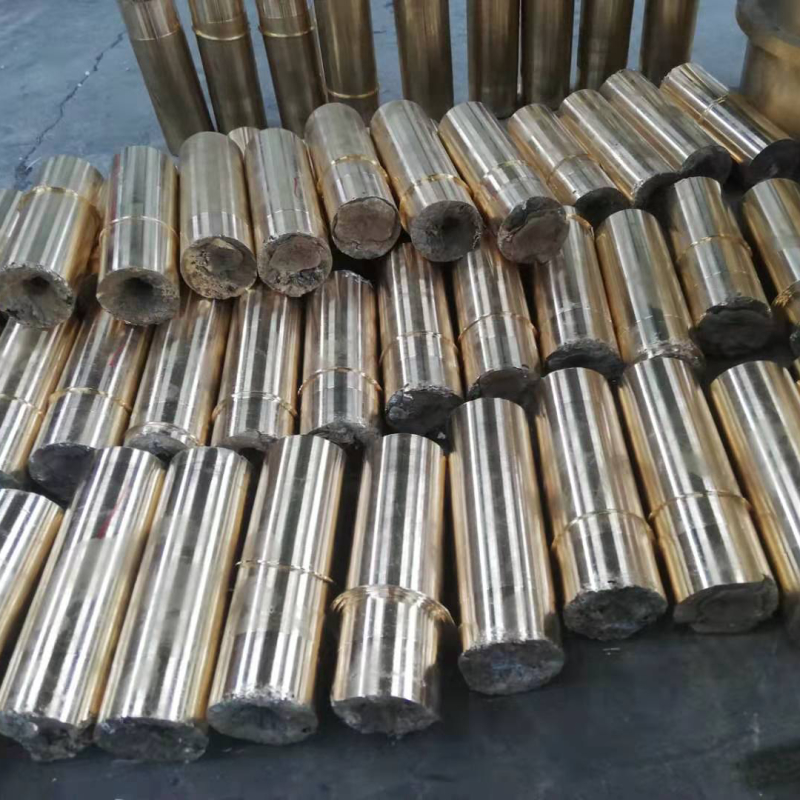Copper and iron bushings each have different advantages and disadvantages, and they are suitable for different application scenarios. Here are some of the main differences:
Copper bushings
Advantages:
Good Wear Resistance: copper bushings have good wear resistance, especially when used at high speeds or under high load conditions. They are often used in applications where self-lubricating properties are required.
Low coefficient of friction: The low coefficient of friction of copper bushings helps to reduce wear and heat generation between moving parts, thus extending equipment life.
High corrosion resistance: Copper bushings have good corrosion resistance and are suitable for longer periods of time in wet or corrosive environments.
Good thermal conductivity: Copper has better thermal conductivity, which helps to dissipate heat better in high temperature environments.
Disadvantages:
Higher cost: the price of copper is usually higher than iron, so the cost of copper bushings is also relatively high.
Lower strength: copper has lower mechanical strength than iron, so it may not be as durable as iron bushings in some high-strength applications.

Iron Bushings
Advantages:
High strength: Iron bushings have high mechanical strength and are suitable for applications where high loads or impacts are required.
Lower cost: Iron is less expensive than copper, making iron bushings more economical.
High temperature resistance: the melting point and high temperature resistance of iron material is better than copper, suitable for use in high temperature environment.
Disadvantages:
Poor abrasion resistance: compared with copper, iron bushings have poor abrasion resistance and are prone to wear out, especially when insufficient lubrication is provided.
High coefficient of friction: iron materials have a higher coefficient of friction and are prone to greater wear and heat generation, which may require more frequent lubrication maintenance.
Poor corrosion resistance: iron bushings are prone to rust and may have a shorter life when used in wet or corrosive environments.

Application Scenarios
Copper bushings are suitable for equipment requiring high wear resistance, low friction and good thermal conductivity, such as motor bearings and sliding parts.
Iron bushings are used where high strength and cost control are required, such as in heavy machinery, structural components and high temperature equipment.
The choice of bushing usually depends on the specific needs of the application, including loads, speeds, environmental conditions and cost considerations.
| Previous:What are the lathe tools for the production of copper fittings? | Next:What is the three-coordinate inspection of copper bushing? |




 Copyright © 2022
Copyright © 2022